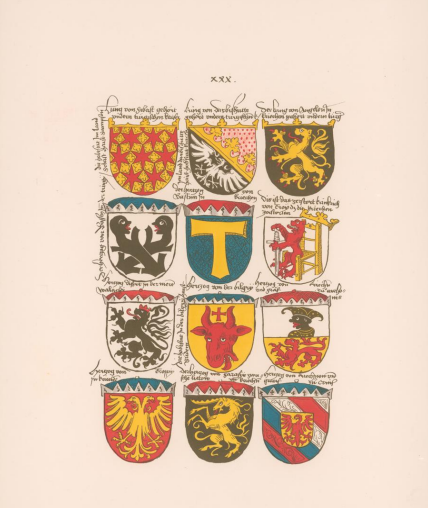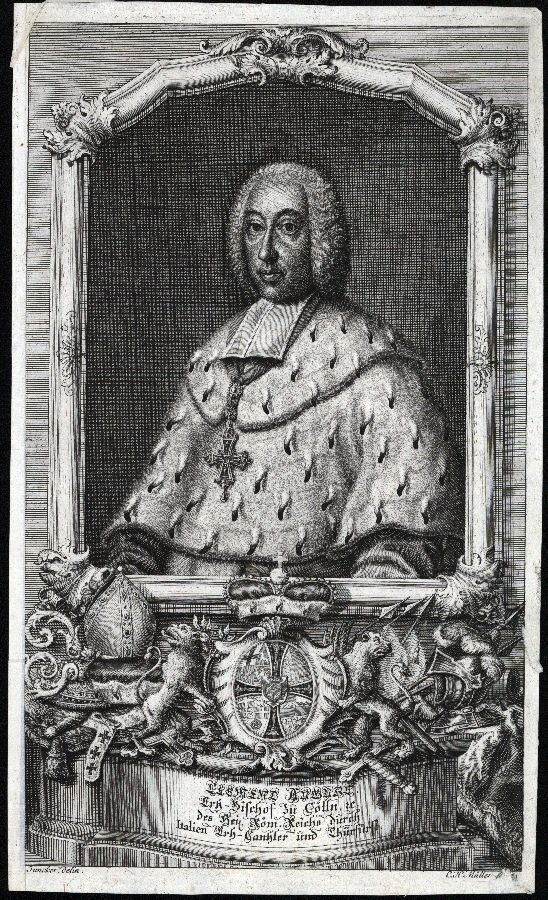A firsthand account from a British spy and court informant in the early 18th century, this memoir catalogs notable political figures, nobles, and courtiers — many of whom show up in historical discussions around Black European identity and legacy.
Author: B1 Decoded
Armorial Général A–K (Rietstap) – Heraldic Dictionary & Nobility Coats of Arms
 Loading…
Loading…
Conrad Grünenberg Wappenbuch (Supplementary Volume)
The Mamouth Rebellion
The Hidden Truth About Monmouth’s Rebellion: How Black European Protestants Were Enslaved in America
By B1Decoded—
Introduction
Much of what we know about American slavery has been framed through a narrow and incomplete lens. But what if the true story is far bigger—and far more shocking?
The Monmouth Rebellion of 1685 exposes a hidden chapter of history: when thousands of Black European Protestants were enslaved and shipped to the Americas after losing their fight for liberty.
This isn’t theory. It’s documented. And yet, it’s missing from the mainstream narrative. Today, we at B1Decoded bring you the untold story.
The Monmouth Rebellion: Not Just a Political Uprising
The Monmouth Rebellion, also known as the Pitchfork Rebellion or Revolt of the West, was an attempt by Protestant dissidents to dethrone King James II—a Catholic monarch and the son of Charles I.
The rebellion was led by James Scott, 1st Duke of Monmouth, the illegitimate son of King Charles II, a Black European ruler often whitewashed in modern history books.
When Monmouth’s forces were defeated at the Battle of Sedgemoor, King James II unleashed brutal retribution. Those who weren’t immediately executed faced another horrifying fate: they were sentenced to “transportation”—shipped off as slaves to the American colonies and the Caribbean.
From Rebels to Slaves: The Bloody Assizes
Following the rebellion, the infamous “Bloody Assizes” were overseen by Judge George Jeffreys, where mass death sentences were handed out.
According to warwalks.com and The Bloody Assizes by J.G. Moodyman, 856 men found guilty of rebellion were sentenced to be shipped away as indentured convicts—no better than slaves.
Rather than executing them, King James II gave many of these prisoners to his friends, who profited by selling them to plantation owners in the colonies. Here’s just a glimpse of the distribution:
| Name | Number of People Gifted |
|---|---|
| Sir William Booth | 195 |
| Sir Philip Howard | 174 |
| Sir Christopher Musgrave | 100 |
| Queen (herself) | 100 |
| Mr. White Staple | 70 |
Ships like the “Endeavour,” “Rebecca,” “Happy Return,” and “Port Royal Merchant” ferried these prisoners to places like Jamaica, Barbados, Virginia, and St. Kitts — where they were sold at auction.
The Dehumanization Process
The testimonies from these survivors are haunting. Upon arrival, they were:
- Auctioned to the highest bidder like livestock.
- Denied any wages or property rights.
- Flogged and beaten routinely.
- Trapped in an endless cycle, where minor “infractions” extended their servitude beyond original contracts.
One rebel wrote of being sold and extorted by George Penn, who threatened harsher treatment unless relatives paid for freedom upfront.
Many never escaped. Those who did were “rewarded” with 500 pounds of sugar — barely enough to survive.
Who Were These People?
Despite modern attempts to portray them as “white peasants,” a closer look reveals:
- Many were melanated Europeans — descendants of ancient Moors, Black British nobles, and Jacobites.
- Documents describe runaway Irish and Scottish servants with “black curled hair” and “swarthy complexions,” not the fair-skinned stereotype.
- Black Protestants, Moorish Jews, and others were forcibly stripped of their rights and sold into slavery.
The evidence challenges the false dichotomy of “white equals free, Black equals slave” that’s been heavily pushed in modern narratives.
The Scottish and Irish Slave Trade: A Hidden Industry
In Scotland, press gangs operated openly, kidnapping men, women, and children to sell them into bondage.
The Bristol Registers (1654–1686) document how Bristol merchants systematically abducted “servants” — many of them forcibly — to supply the hungry American plantations.
This was so common that Scottish parents feared bringing their children to port cities lest they be kidnapped into slavery.
The Religious Factor: Catholic vs Protestant
The rebellion wasn’t just political—it was religious.
- King James II was Catholic, following in the footsteps of his father, Charles I.
- Monmouth’s forces were Protestant, part of the lingering Moorish and Judaic traditions of old Black Britain.
- Defeat meant spiritual oppression just as much as physical bondage.
Understanding these religious divides uncovers how the suppression of Black European Protestants paved the way for a total rewriting of history.
Hijacking History: The Great Deception
Once transported, these melanated Europeans became labeled “African slaves” — erasing their true identities.
They were told they had no history, no nobility, no civilization beyond chains.
Meanwhile, the descendants of those original Black monarchs — King James I, Charles I, Charles II — were either exterminated, enslaved, or forcefully assimilated.
B1Decoded’s takeaway:
The “Middle Passage” story we know hides a deeper betrayal — many of the original so-called African slaves were in fact Black Europeans.
Final Thoughts: Unbreaking the Chains
We are standing on stolen identities.
The blood of kings, rebels, tailors, shoemakers, and scholars cries out from the fields of Jamaica, Barbados, and Virginia.
Their stories were buried beneath lies. But today, piece by piece, we are decoding the truth.
B1Decoded is committed to shining a light on these suppressed chapters of history—not to divide, but to finally heal through truth.
Stay tuned. More revelations are coming.
Discover the Hidden Narratives of Black European History
The Truth Buried in Time
Welcome to our exploration of the concealed aspects of Black European history. Across centuries, narratives have been suppressed and marginalized, leaving behind a fragmented tapestry of the past. Our landing page, titled “Explore the Truth,” invites you to uncover these hidden stories and the achievements of Black nobility and regional rulers.
Unearthing Suppressed Histories
Black European history is rich with contributions ignored for far too long. With an intriguing parchment and medieval-style background, we set the perfect tone to delve into the past. Our hero section features a faded map, symbolizing the layers of history waiting to be discovered. The bold headline, “The Truth Buried in Time,” accompanied by a compelling subheadline, beckons you to investigate further. Ready to begin your journey? Click our CTA button, “Start with the Origins,” to access foundational knowledge.
Explore Categories of Knowledge
We offer multiple pathways to illuminate these narratives through a visually engaging category grid. Here, you can browse through topics like Black Nobility, Coats of Arms, and the enigmatic Wildmen of Europe. Additional categories such as Regional Rulers, Visual Archives, and Audio Truth provide diverse formats to experience this history.
As you reveal these stories, don’t miss our featured articles that highlight three popular posts, each illuminating a unique perspective. Finally, explore our visual timeline marking pivotal events like 711 AD (Moors), the 1300s (Wildmen), and 1755 with Benjamin Franklin. Wrap up your visit by joining our community with an email opt-in for a free PDF, ensuring you receive the latest insights direct to your inbox.
Explore the Truth: Unveiling the Buried History of Black Europe
The Truth Buried in Time
Welcome to our exploration of suppressed black European history. As we delve into the stories of those who have been overlooked and forgotten, we aim to uncover a rich heritage that has long been obscured by time. The journey begins here—where history is not just a relic of the past but a vibrant tapestry waiting to be unraveled.
Navigating the Categories
To guide you on this journey, we have curated a collection of categories, each offering unique insights into the history of black nobility, wildmen of Europe, and regional rulers. Our categories include:
- Black Nobility
- Coats of Arms
- Wildmen of Europe
- Regional Rulers
- Visual Archives
- Audio Truth
Featured Articles
Don’t miss our featured articles that shed light on pivotal moments of black European history. Check out our popular posts that bring to life the struggles and triumphs of history:
- Discovering the Moors of 711 AD
- The Enigma of the Wildmen in the 1300s
- The Impact of Benjamin Franklin in 1755
Join our journey and subscribe to gain access to exclusive materials, including a free PDF that dives deeper into the hidden truths of black European history. Sign up now and start your adventure in exploration!

